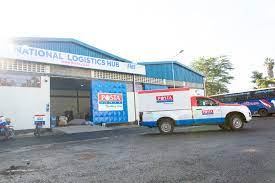|
Water sources have been contaminated and 33 health centres have been destroyed along with homes, crops, irrigation systems and farm equipment, and roads and train lines
|
|
NAIROBI, Kenya: More than a month of heavy rains are wreaking havoc in Kenya, triggering floods that have claimed an estimated 100 lives and displaced nearly 260,000 people.
Many of the communities affected were already struggling to recover from the 2017 drought. “This is a double tragedy for many communities,” said Abbas Gullet, Secretary General of the Kenya Red Cross Society. “These people are strong, and they have already overcome so much adversity. But there is only so much a person can take, and I’m worried that these floods will push some people beyond the brink.” Kenya Red Cross and the International Federation of Red Cross and Red Crescent Societies (IFRC) will be focusing much of their efforts on supporting these “high risk” communities. “We will be supporting people from 15 out of the 29 affected counties. These include ten counties that we have already been supporting through our drought response programme,” added Gullet. The floods may also trigger or worsen outbreaks of disease such as malaria and cholera. Water sources have been contaminated and 33 health centres have been destroyed along with homes, crops, irrigation systems and farm equipment, and roads and train lines. “There are already active cholera outbreaks in five of the counties affected by floods. We fear that these outbreaks could worsen and spread,” said Dr Fatoumata Nafo-Traoré, Regional Director for Africa at the International Federation of Red Cross and Red Crescent Societies (IFRC). “We are also worried that once the rains subside, people may face an upsurge of mosquito-borne disease such as dengue fever, chikungunya and malaria. We need to act now to pre-empt these very real, and potentially very deadly threats,” said Dr Nafo-Traoré. IFRC and Kenya Red Cross Society have launched an international emergency appeal for 4.7 million Swiss francs to provide shelter and settlement, health and nutrition, water and sanitation and food security and livelihoods support for 150,000 people. |
Welcome!Log into your account



















